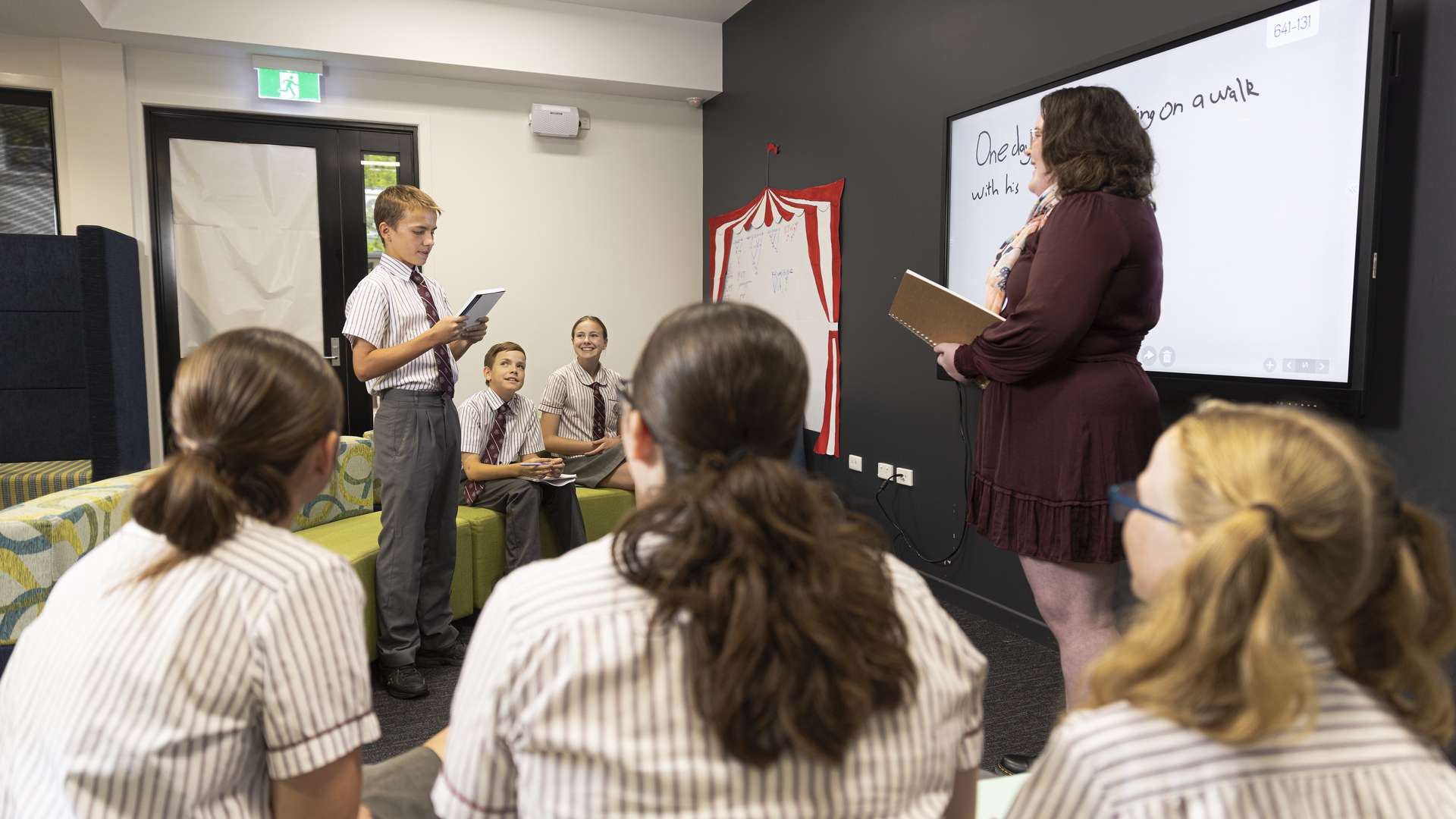
The Diploma of Secondary School Teaching is a professional development course designed for both primary school teachers looking to transition into secondary school teaching and secondary school teachers wanting to add a new teaching area or improve their knowledge in a current teaching area.
This course has been developed in partnership with leading educational authorities, ensuring it is current and relevant. It is ideal if you:
During your studies, you will benefit from the unique model of supported on-site school delivery and online study, which involves expert school-based teaching staff on-site and university staff online. Our teaching staff are often drawn from their roles as practising teachers, ensuring you have access to some of the most well-connected educators in the field.
The flexibility of this course ensures that your study needs are met and allows you to gain the appropriate content knowledge for the Australian Curriculum areas at a secondary school level.
Enhance your skills and knowledge in: Advanced Mathematics, Agricultural Science, Biology, Business, Chemistry, English, General Mathematics, Geography, Health and Physical Education, History, Home Economics, Industrial Technology and Design, Junior English & History, Junior Mathematics & Science or Psychology.
Discover more about your online Diploma of Secondary School Teaching, including flexible study options to help you fit study with your existing commitments. Click 'Explore Study Experience' for more information.
On completion of the Diploma of Secondary School Teaching you will be prepared to make the transition from a primary school teacher to a secondary school teacher or have acquired content knowledge to add a new teaching area.
The course structure and available locations can change depending on when you want to study. You can choose the intake that best suits you in the drop-down menu below.
Depending on your chosen major, you must complete either six or seven units (48 credits):
The units you'll study are listed below. Click on a unit to learn more.
In the Diploma of Secondary School Teaching, you are required to complete a major. The core units you'll need to complete for this course sit within your chosen major.
You must complete the six units listed below.
If you are commencing in Term 2 and wanting to study the Advanced Mathematics Major, majority of these units can only be studied in Term 1 due to strict pre-requisite requirements.
To help you plan your studies and see which unit comes first, if one unit should be completed before another and the term you will study each unit, check out our course planners.
If you have completed prior study relevant to units within this course, you may be eligible for credit for your past studies.
For your application to be considered, you must meet the following entry requirements.
View the student and course profiles for this course and learn about CQU's Undergraduate Profile for Term 1, 2025 via our Institute Profile.
While not needed to apply, you'll need to meet the following requirements throughout your studies.
The Indicative First-Year Fee is the approximate cost of enrolling in this course for one full-time academic year (eight units over two terms) for a Commonwealth Supported Place (CSP) and should be used as a guide only. Your actual fees may vary depending on the units you select to study and your study load. Check the Cost per Unit spreadsheet available on our Understanding Course Fees webpage.
Fees are reviewed each year and are subject to change. Fee estimates for the following year are expected to be available in September each year.
This course has Commonwealth Supported Places (CSPs) available, and as a domestic student, you'll be offered a CSP, provided you meet CSP eligibility requirements. CSPs are subsidised by the Australian Government, meaning you are only required to pay the student contribution rather than full tuition fees.
You may be eligible for a HECS-HELP government loan if you are offered a CSP. HECS-HELP is an Australian Government loan scheme that assists you in paying your student contributions. Provided you meet the HECS-HELP eligibility criteria, you may use HECS-HELP to defer part or all of your student contribution fees.
Part of your course costs will include Student Services and Amenities Fees (SSAF). SSAF is charged in addition to your student contribution or tuition fees and is used to help enhance your study experience. There may also be other costs as part of your studies, such as textbooks, technology expenses, travel expenses, professional certifications, uniforms, or vaccinations.
We believe a quality education can be for everyone – regardless of background, location, or life circumstances. That's why we offer a variety of scholarships and bursaries that can give you a helping hand with a range of expenses and enhance your employability.
Check what you need to do to apply to study this course.
Prior to applying, take a look at important application dates and learn about our admission considerations, such as information for domestic students with overseas qualifications, indigenous support, and elite athlete, coach and performer support. You should also check out the adjustment schemes that might be available to you and how to access them. You can also explore our offer information to learn more about what happens after you've submitted an application and how to respond to an offer to study with CQU.
When applying through a tertiary admissions centre (TAC) you can use the relevant TAC code below to search for a course or add it to your application preferences.
CQUniversity Australia is a trading name of Central Queensland University
ABN: 39 181 103 288
RTO Code: 40939
CRICOS: 00219C
TEQSA: PRV12073